SUCRE
22/06 - 28/06
Part 1
Monday
We arrived at 6am in Sucre and waited in the bus terminal for Annabelle to secure her bus ticket to Villazon. We then caught the local bus down the hill into town and Annabelle lead the way to the hostel she had stayed in previously (Wasi Mass which means my friend's home in Quechua). Not only did the hostel offer an hour free Spanish lesson per day but also provided breakfast and a 3 course lunch for only B$69 per night. As our special would only start the next day, we showered, threw down our bags and went to the local market for breakfast.
We arrived at 6am in Sucre and waited in the bus terminal for Annabelle to secure her bus ticket to Villazon. We then caught the local bus down the hill into town and Annabelle lead the way to the hostel she had stayed in previously (Wasi Mass which means my friend's home in Quechua). Not only did the hostel offer an hour free Spanish lesson per day but also provided breakfast and a 3 course lunch for only B$69 per night. As our special would only start the next day, we showered, threw down our bags and went to the local market for breakfast.
We had heard about the famous 'hot purple corn drink' called Api which we were eager to try. Annabelle showed us where this drink and another drink called Tojori (a thick porridge like yellow corn mixture - similar to Tastee wheat) could be found in the market. We sat down and got these warm drinks along with a Pastel de queso (puffed bread-like pastry with cheese and icing sugar).
Api, Tojori and a mixture of the two
The Api had a very spicy cinnamon taste to it.
Roxy scalping the Pastel de queso
A typical Bolivian breakfast menu
We were still a little peckish so we headed downstairs and waited in the locals' favourite saltenas line... We had to see how these compare to the ones we had in Santa Cruz!
They were freshly made, hot and delicious! The pastry was just as crispy and soft and in the market we only paid half of what we did in Santa Cruz. Only B$4!
Annabelle took us on a little walking tour around town to help us get our bearings.
We noticed that Bolivian people love an excuse to dress up.
One of the initiatives the government is running is to take previous street children, train them on the rules of the road and employ them as Zebra crossing assistants.
They are extremely energetic and enthusiastic and seem to take their job pretty seriously.
Joy and Roxy made it safely across the road thanks to these two!
The Cathedral on the main square, Plaza 25 de Mayo.
Joy pointing at the main place to be - Joyride Café!
This hostel/restaurant/bar screens films every evening on the top floor.
Later that week we went to see the documentary called 'The Devil's Miner' a film on child miners in the nearby silver mines in Potosi.
As we didn't get too much sleep on the night bus, we had a well needed nap before going back to the market for lunch.
We tried some of the local soups (Sopa de mani and sopa de pollo - peanut and chicken soup).
After lunch we went to meet a friend of Annabelle's who was sketching portraits in the park. We watched her at her craft for a while and once she had completed her masterpiece, she took us up the Prefectuar de Chuquisaca State Government building which is said to have the best view in town.
View from outside the building
Climbing the steep stairs to the top
Sucre is known as the most beautiful city in Bolivia and is the symbolic heart of the nation. It consists of whitewashed buildings with red tiled roofs and in the old city the buildings are only allowed to be a maximum of 3 storeys high.
It was for these reasons that the old quarter was declared a Unesco World Heritage site in 1991.
From this vantage point it was easy to see where the boundary to the old quarter was as it was evidenced by skyscrapers loitering on the edge.

Zebras doing good work.
Overlooking the park in the middle of Plaza 25 de Mayo
A mural inside the State building depicting the war to independence.
Annabelle told us of this beautiful viewpoint from where we could see the sunset over the city. We had a few hours before the sun went down so we decided to tackle the steep hill to the view point at Plaza Anzures.
The walk was long and up a very intense incline but once we reached the top we knew it would all be worth it.
Roxy looking out over the white city.
Children playing soccer while waiting for their parents to pick them up.
View of the church through the arch
This little hill reminded us of Bowker's Kop in Queenstown.
Shadow art
Reflections in the glasses.
Sundial
The Monastery
Peruvian tour guide/avid photographer.
Getting the perfect silhouettes
Catching the last light
After this rather eventful day we bid farewell to Annabelle who was off on her bus to Vilazon that evening. We wanted to have an early night so our minds could be fresh for our first Spanish lesson the next afternoon... Feels like a school night!
Tuesday
Before our first Spanish lesson in the afternoon, we decided to visit the Parque de Cretacico, where we could see preserved dinosaur footprints.
School children doing a walking protest down the street. We guessed from their posters that it was an Environmental March.
We caught the local bus (number 4) and took it for 45min, all the way to the last stop.
Along the walkway up to the park entrance were these information plaques which gave the history of the development of the world.
South Africa even gets an honourable mention at 270million years!
Joy desperately trying to pet her new scaley friend.
Upon entering the park, we were directed to the TV lounge where we caught the last 30mins of an educational film on the dinosaurs. Unfortunately, it was all in Spanish so although we got the gist of the story (they all die in the end, except the crocodiles) we did miss out on some of the more intricate details.
We were then greeted by our tour guide, Juan Carlos, or JZ - his gangsta name. He was to show us around the park before our tour to see the real life dinosaur footprints at noon.
Mould of the different footprints we would soon see.
JZ took us around and gave us some of the history behind the dinosaurs and the footprints that were fossilised in this area.
Terepods and Sauropods - the culprits behind the footprints on the wall
Mould of a Terepod's footprint
Eek... Look behind you!
Shell fossils
Roxy and JZ
The footprints were discovered accidentally by the cement making company which was excavating the area. While they were digging away, they came to this layer of rock which was rich in Magnesium Oxide. This is not good for cement making so they abandoned their excavation, leaving this huge wall exposed. Overtime, wind and rain eroded the layers of rock away and exposed the dinosaur footprints hidden below.
The V-shaped wall containing the footprints. JZ told us that we could only walk on the right side of the wall as the left side was very unstable.
The wall used to be a flat piece of land but the tectonic plates collided and as one slid under the other, the top plate rose up to form this vertical wall - the perfect display for these prehistoric fossils.
Roxy viewing the wall through the telescope.


The park was filled with models of some of the dinosaur species and JZ gave us some information as we walked around.
The mighty Titanosaurus or as it is more commonly known by children who watched 'The Land Before Time', the Long-necked.
Feels like we are living out a Jurassic Park movie
Roxy showing us which foot goes where on the only real life dinosaur print we were allowed to touch at the park.
There was a cute children's playground, kitted out with dinosaur inspired play things... We just had to investigate.
No... Quick Rox use the karate chop!
The park was very well maintained and had beautiful flowers growing all around the perimeter.
At noon, we headed to the designated meeting area to begin the guided tour down to the wall. As this was still an active excavation site, proper safety attire was necessary...
Rox and Joy in the park issued hard hats.
JZ leading us down into the canyon
The surroundings reminded us of the dry Eastern Cape countryside.
The four types of footprints that have been identified on the wall. A new count had been down earlier this year and over 5000 additional tracks were discovered.
The example of the two footprints we would be able to view. We would not be able to see the other two types of tracks as they fell onto the forbidden left side of the V.
Sauropod footprints
Terepod example - can you follow the track?
The 200m high cliff face
The wall's stability is measured and monitored by these lasers in the wall.
Sauropod print
Plants breaking through - these plants are a real danger to the preservation of the footprints as they create movement of the rock layers and cause distortions to the wall face. They often spray the wall with chemicals to kill plants growing on the wall.
A truck unloading rubble. Quite a dust storm resulted!
This odd surface was created by the water that ran in the river that once occupied this area.
Ooh... A new species is discovered... A joyous-ter-rox-osaurus!
A half submerged footprint slowly getting unearthed via soil erosion.
Map of the park
The cement factory right next to the dinosaur Park.
After all the excitement of the Dinosaur Park, we efficiently jumped on the local bus, woke up the bus driver from his siesta and we were back on our way home. We had a lovely lunch at the hostel (soup, rice and chicken and fruit) before heading off to our first Spanish lesson. Our tutor's name was Isaac and within the first few minutes of the lesson we both felt that he was very patient, competent and would pushes just far enough beyond our comfort zones. We learnt basic pronunciation, the permanent 'to be' verbs, some basic adjectives and the plurals thereto. After the lesson we could basically introduce ourselves and say that we were friendly, white, backpackers from South Africa. We even got given homework - it has been a while since we felt like such school children.
We decided to leave the homework for the morning, when our brains would be fresher. Instead we were off to the Joyride cafe for movie night. Markus, the German guy in our dorm decided to join us. At the cafe we ordered some coca tea and t con t (singani, lemon and tea) to keep us warm on the freezing Bolivian night. It was after all the night after San Juan's Day - the coldest day of the year in Bolivia. Unbeknown to us, Rox's drink came with a free hotdog - however the staff at the cafe made her pose in all sorts of embarrassing ways and took photos for the promo. The film, as previously stated was about child miners in the nearby Potosi silver mines. The doci had a special focus on the faith of the miners in the Tio (the devil spirit of the mine), the rituals they perform to ensure that the Tio affords them protection and how this belief is integrated with the miners' faith in Christianity. As we are both slightly claustrophobic, had limited time in Bolivia and there are plenty of mines in South Africa, we had already planned to give this city a miss. However, this documentary gave us such invaluable insight into the lives, hardships and beliefs of the miners, and all from the comfort of the cafe's sofas, that we felt we could skip Potosi with a clear conscience.
Wednesday
The next morning, like good students, we arose early to complete our homework. After a quick breakfast we then headed to the Casa de la Libertad, which is where the declaration of independence of Bolivia was signed on the 6th of August 1825. It also houses various political artifacts and portraits of presidents past. It was B$15 to gain entrance but this included an English speaking guide.
European style decor
This cabinet was hand crafted by Bolivian carpenters and had all sorts of secret compartments
Full functional and in tune harpsichord which still gets played once a year
Rox wearing one of the First Lady's head dresses - she never ventured out into public without one.
They don't make them like that anymore
This ornate Hall first belonged to the Jesuit missionaries and was then given to the University. The University used this Hall to examine the Doctorial candidates.
Joy standing where the Declaration of Independence was signed
Copy of the Declaration of Independence - the original is kept inside the vault of the National Bank in Sucre.
The official National flag
This was a balcony where the women could watch the Doctorial candidates being interviewed... Only in silence of course.
Iron sheath armour rusted with age
Burial casket for the Professors of the University
This painting may not seem like much, but this iconic Lady's French attire is what inspired Bolivian women's puffed out layered skirts - A fashion which is still worn today by the traditional Indigenous women.
Bolivia's first President - General Simon Bolivar.
Indigenous couple who led the revolution for independence.
All the signatures of the the political representatives of the different States of Bolivia who voted in favour of independent from Spain.
This scene depicts a battle between the out numbered indigenous and the Spanish forces. The indigenous used their knowledge of the surroundings and hid amongst the cactii and used sling shots to defeat their enemy.
Jose Marino Serrano
Probably the most hard-core woman in Bolivian History, Juana Azurduy Bermudan. She outlived her husband in battle and also lost her children in the fight for freedom against Spanish rule.


The flag of Argentina was first used as a symbol of separateness from Spain until they designed their own one. Here lies the original flag used for the purpose and a replica of what it once looked like in its original form.
El Mariscal Sucre
Flags on the right are the old Bolivian flags. Flags on the left are the National flag and the other official flag represents the 30 tribes of Bolivia that comprise the former Inca Empire.
Joy amongst all the weapons of yesteryear
Document declaring that Sucre is the Capital of the Republic.
Most decorated President that Bolivia has ever known.
Victor Angel Paz Estenssoro- Bolivia's longest serving President
Lidia Gueiler Tejada - the first woman to become President of Bolivia in 1979. She was only in power for one year before being overthrown by her very own cousin.
French attire leaving it's mark once again.
Juan Evo Morales Ayma - The first indigenous Bolivian President elected in 2006. He is currently serving his second term of office.
Joy with our tour guide.
View from the outside.
After we had soaked up our fill of Bolivian History we headed back to the hostel for lunch (soup, meat and rice and jelly for dessert). After that it was onto our second lesson of Spanish. We had organised with our tutor to have an extra hour so today was going to be doubly productive... We hoped. We learnt more phonetics and temporary 'to be verbs.' After our much longer lesson we needed to let loose a bit and absorb Spanish in another form... Salsa dancing!!!! This German bar called Cafe Kultur Berlin gave two for one mojitos and free salsa lessons every Wednesday - we were in.
Markus came with us and we watched a bit of the Copa America soccer and played some cards while enjoying our cheap drinks. Once we were well lubricated it was time for Salsa. We were led by a very flamboyant little man with perfect hair and fluid hips and he was a fabulous dancer. He had his work cut out for him though as the room was mostly filled with uncoordinated gringos. Even though we weren't stars ourselves, it was hilarious to watch, especially the European boys trying desperately to shake their hips and move in time to the music. After a fun filled night and after we were sufficiently sweaty and salsa'ed up we headed to bed for some much needed rest.
Thursday
Rise and shine, homework time. After we had put in the morning grind it was breakfast time and who would have guessed... Pancakes for breakfast - what a treat! We had heard that there was a pink castle tucked away in the hills just outside Sucre and being little girls at heart we could not resist. So after breakfast it was onto the number 4 bus again (only the opposite direction this time). The castle was located on the same property as a military Base so we felt very scrutinised when we entered the grounds - just as if there was a real life castle guard alert at his post.
Joy outside the castle gates
Bridge across to the military camp
Bell tower
Highest tower in the castle - going to have to climb many stairs to appreciate the view from up there.
The castle was built by a couple who did a lot of charity work with orphans around Sucre. They had shares in the Potosi silver mines at a time when the mines were at their most lucrative and thus amassed a small fortune. As they did not bear any children themselves, they used their wealth to improve the lives of other less fortunate children and would even put them up in their own home. They rose in the political ranks and were sent to France to be ambassadors and represent Bolivia in the Roman Courts. While there, the Pope at the time was so impressed with their charity work that he bestowed the title of Prince and Princess upon the couple. Thus La Glorieta Castle was constructed and completed in in 1897.
The Prince with the little orphans he loved and cared for... And is that orphan Annie in and amongst the crowd...? Nope it's just Rox.
Entrance to the castle
Beautiful stained glass windows
Gold embellished ceilings
The principle tower
Some of the many stairs to the top of the tower
Unfortunately the upkeep of the castle had been in trusted to the military who let it fall into rack and ruin. Since then it has passed ownership to two separate development corporations. Unfortunately both have failed to properly restore this old building to its former glory and make it more of a tourist attraction. We had read that the outside of the building was far more impressive than the inside and it was for this reason that we decided that only one of us would enter and we could save money on the overpriced entrance fee.
Dirty windows
At least the view from the top of the Princess' tower could not be spoilt
However the railing was really loose and Rox made sure she clung to the wall instead
You could see the military officers having rifle practice on a nearby field
Unfortunately graffiti also marred the walls of the tower
Most of the rooms in the castle were either empty or locked and there were only about three or four information plaques. But this one room had been used to show how the couple put up little orphans in various dormitories around the castle.
Joy waiting outside and watching the goats that were depressingly eating all the rubbish from the polluted stream nearby.
Even though it was sad to see this castle so neglected, one could see past the cracked mirrors and dusty windows and marvel at the wonder and majesty that the castle clearly once possessed.
This clever mirror allowed the viewer to spy who was coming though the front door, all from the top of the stairs on the opposite side.
Mirror selfie
Arched portal towards the outside world.
Cardboard cutouts of the charitable couple.
Some of the only furniture in the castle.
Magnificent marble fireplace overlooked by yet another broken mirror.
To the side of the castle was a little chapel. It contained pews, decorations and religious figurines.
Looks like it could use a new coat of paint.
Wooden inlaid floor.
The family crest
The pink castle... Aptly named.
After an hour of wandering around the castle, Roxy exited to find a slightly sun burnt Joy and relayed tales of her adventures. Good thing only one of us had to endure all the excitement.
Military guard patrolling the perimeter.
The chapel was the one part that Rox thought Joy should see so...
Joy took a sneaky peak into the little chapel.
We boarded our number 4 bus and took it all the way back to the city centre just in time for lunch. At lunch we met up with Markus, he was feeling rather poorly and had even cut his morning Spanish lesson short - very unlike him. He had an afternoon lesson scheduled with Isaac but was not feeling up to it and offered the slot to us. Unfortunately, we had already planned to visit Templo Nuestra Señora de la Merced before our lesson and this would be our last chance to visit this church which is said to have the most beautiful interior of all the churches in Sucre.
We dashed down to the square in search of this church, but went right past it. In our defence, the signage was very poor and it was undergoing renovations.
We paid B$10 to enter and were lead up to the top of the bell tower.
View over the city.
Ringing the bell
View of the cathedral in the main square.
We felt quite sneaky being on top of the roof. The passage ways were narrow and the doorways quite short. Joy bashed her head a few times, clearly they were designed for a hunchback, not for someone of Joy's mighty stature... Roxy on the other hand had no troubles!
Joy on top of the world.... Or at least just the roof!
Not too close to the edge, Rox.
Joy crouching in the miniature doorway only moments after hitting her head... Again!
View of the interior of the church from the balcony.
These were beautiful tapestries. Unfortunately, we were not permitted to use any flash photography and thus our pictures do not do justice to the intricate artworks or the rest of the church's golden interior.
Joy practising 'chopsticks'
Organ pipes and a piper.
The large, ancient door leading up the stairs to the bell tower.
There was gold everywhere. On every wall and on each statue or mural.
Magnificent chandelier.
The golden pulpit.
The cleaning lady caught in the light streaming in through the big front doors.
The church gallery
It is confession time.
Holy water
View from the street... How did we manage to miss it?
Another church just across the road.
After witnessing this beautiful piece of architecture and design, we hurried back to the hostel for our afternoon Spanish lesson.
That evening we watched the soccer, Copa America, comfortably from the common room. It was Argentina vs Colombia. It was quite a passionate match, as most South American games tend to be, and ended with Argentina winning on penalty shoot-outs. We had had quite an eventful day and went straight to bed to prepare for the adventures of tomorrow.
















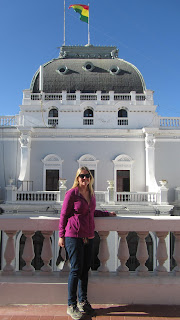





































































































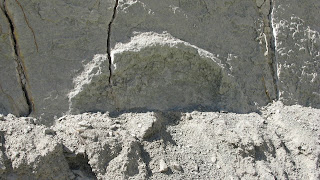









































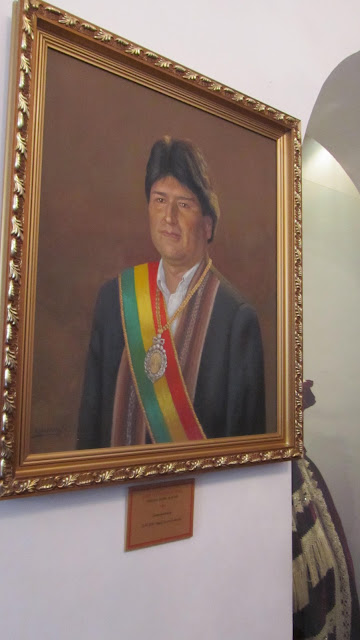





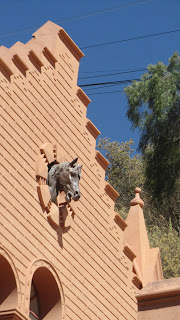




























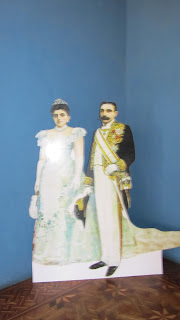



























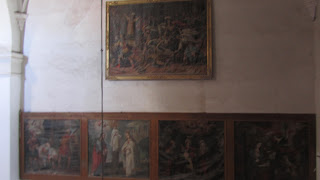










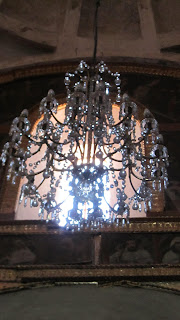















No comments:
Post a Comment